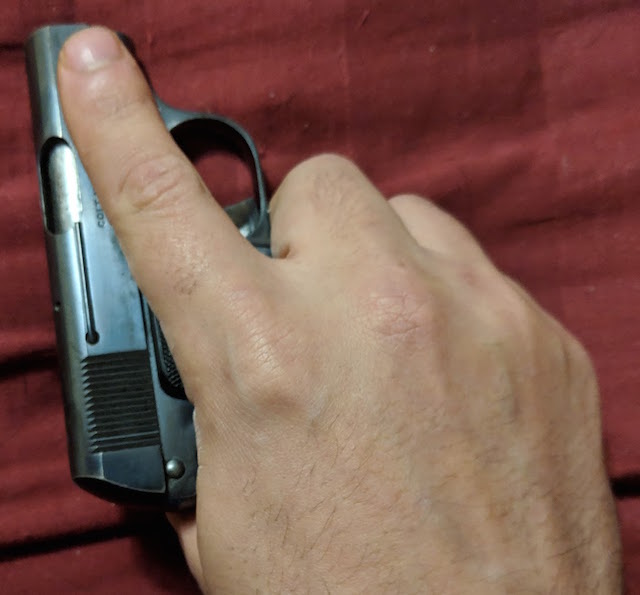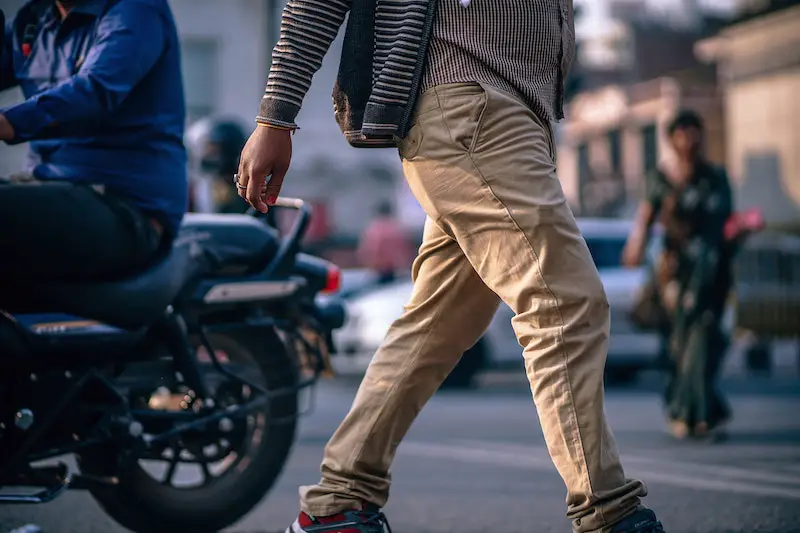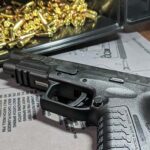Table of Contents
Important Rules for Basic Firearm Safety
There are four very important rules when handling any firearm. Before you can carry your handgun concealed with confidence, you need to be familiar with the basic safety protocols for handling your weapon.
- Always treat every firearm as if it were loaded
- Always keep the firearm pointed in a safe direction
- Keep your finger off the trigger until you are ready to shoot
- Keep the firearm unloaded until you are ready to use
1. Always Treat Every Firearm As If It Were Loaded
The first, and probably the most important rule of basic firearm safety is to treat every gun as if it were loaded. Firearms are not toys, and should be respected and handled with care. Failing to treat the firearms you are handling with care can result in injury to yourself or to others. Until you have verified the firearm is not loaded by visually inspecting and clearing the weapon yourself, the weapon should be considered loaded. Never assume anything when it comes to firearms, as this is a recipe for disaster.
2. Always Keep The Firearm Pointed In A Safe Direction
To prevent injury to bystanders, and yourself, it is imperative that you keep the firearm pointed in a safe direction while handling. Do NOT point the muzzle at yourself to look down the barrel as part of a visual inspection. Remember, you should never point the weapon at anything you are not willing to destroy, which includes your own face.
When at the firing range, this means keeping the muzzle pointed downrange where the target is. Never turn around in your shooting lane with a loaded firearm. If you experience an issue, alert a range master, or other experienced shooter to help with your problem. Any respectable range will have an instructor or employee come to you.
While carrying your weapon concealed, this means housing it in an appropriate holster. I have my own preferences when it comes to the type of holster that is best to avoid injury to yourself and those around you.
3. Keep Your Finger Off The Trigger Until You’re Ready To Shoot
The concept of keeping your finger off of the trigger until ready to shoot is more commonly referred to as trigger discipline. Trigger discipline means keep your finger off of the trigger and resting on the firearms frame until it is time to fire your weapon. However, for many, this is counter-intuitive. It takes practice, and effort to prevent your finger from automatically making contact with the trigger when handling a firearm.
Unholstering your weapon, and placing your finger on the trigger is the most common error that new shooters make.
4. Keep The Firearm Unloaded Until You’re Ready To Use It
When you are at home and the firearm is stored and not being used for home protection, the weapon should be unloaded. Furthermore, if you are at the firing range and not actively involved in shooting (e.g. loading extra magazines, receiving instruction, etc.) your firearm should be unloaded.
However, when carrying concealed for personal or home defense, the weapon will undoubtedly be loaded. Because loading your weapon, and racking a round uses valuable time, it is important to master rule number 3 of basic firearm safety.
Important Rules To Remember When Operating A Firearm
While we discussed the 4 rules for handling a firearm, there are additional rules when operating one. However, none of the above should be ignored when using a firearm. When using your firearm, ensure that you know what your target it, what is between you and your target, and what is beyond it. Additionally, ensure that you keep your firearm in good working condition. Always use the appropriate ammunition for your weapon. Know how to operate the safety mechanisms on your firearm, or if your weapon does not have any external safeties. Finally, NEVER operate a firearm while under the influence of alcohol, illicit drugs, or any other mind altering substance. Additionally, if you are using your weapon in an environment that permits you to use ear and eye protection, you should do so.
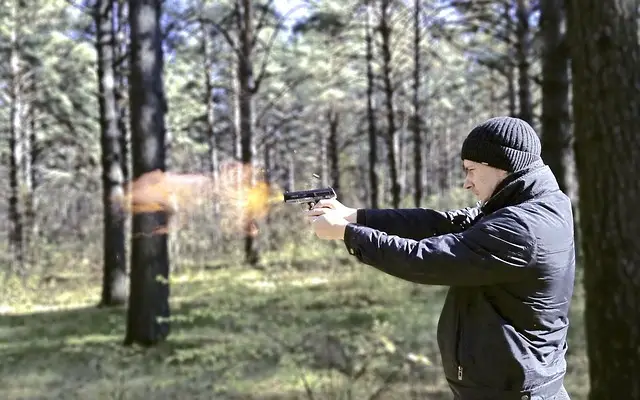
Know Your Target
It’s important when using your firearm that you understand three things. First, know what your target is. Second, you need to know what is in between the muzzle and your target. Finally, you need to know what is beyond your target.
Obviously, it is important to determine your target for proper sight alignment. Whether it is a paper target on the shooting range, or a life and death situation know what you are shooting at. Being able to identify what is in between you and your target is equally as important. Failure to do this can put bystanders in harms way. Also, depending on the type of obstruction, the bullet could ricochet and hit something other than the intended target. The final and often overlooked rule of shooting is to know what is beyond your target. Just because you intend for a bullet to stop when you hit the target does not mean that it will.
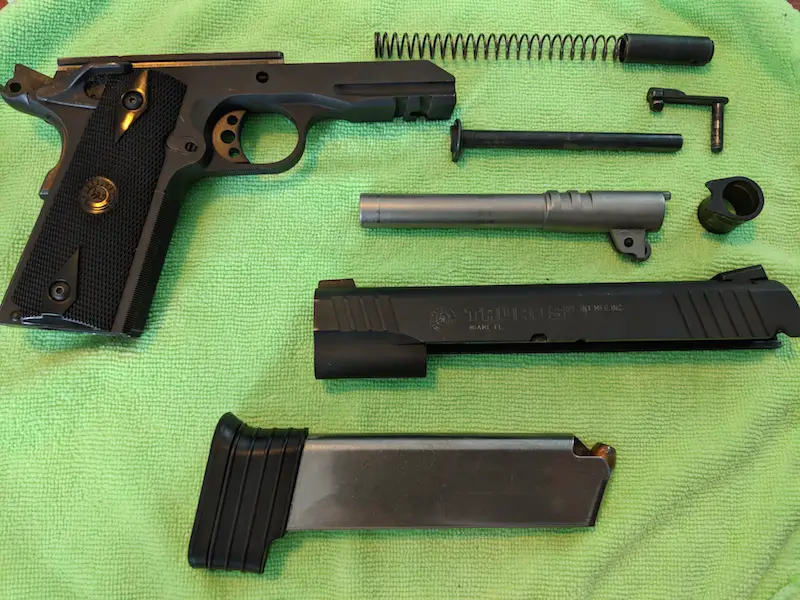
Firearm Maintenance
It is imperative that you keep your firearm in good working condition. Failure to keep your weapon clean, and in good working condition can mean a critical failure when you need it most. More importantly it can lead to mechanical failure that can cause bodily harm to you or others. Cleaning your weapon at regular intervals, including after any trip to the shooting range is ideal. Furthermore, you’ll need to cycle your everyday carry ammunition to account for defective ammo.
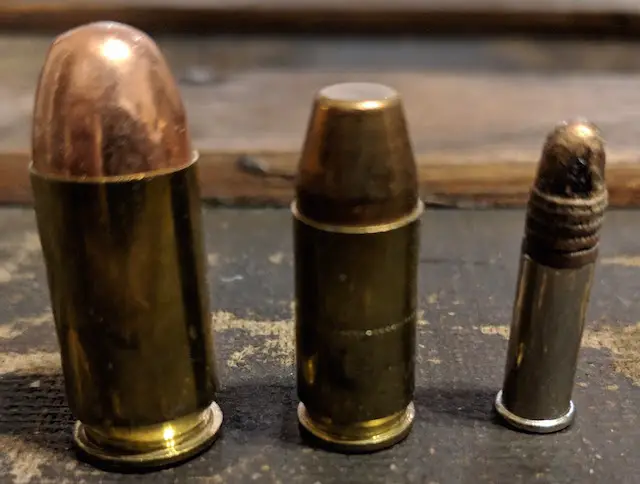
Use The Appropriate Ammunition
Part of maintaining your weapon is ensuring that you are only using the ammunition that is appropriate for your firearm. However, I’m not necessarily talking about the brand of ammunition, but rather the caliber. Loading your firearm with the proper caliber is essential if you want to avoid disastrous results. Furthermore, under certain circumstances, the grain can also matter. Using a “hot load” can be detrimental to the overall health of your firearm, and can result in serious injury to the user.
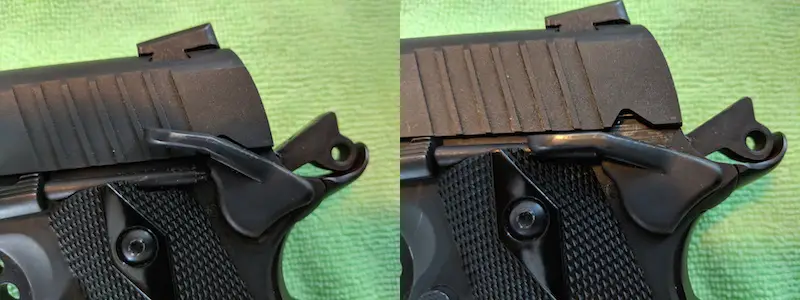
Know The Safeties And How To Operate Them
Many weapons come with external safeties. External safeties are mechanical devices on a firearm that help prevent negligent and accidental discharges. However, a weapon is a mechanical device and therefore subject to mechanical failure. While infrequent, they have been known to happen. It is important to know what safety features your weapon is equipped with. Furthermore, as a user, you should know how to engage and disengage these safeties properly. Finally, it’s important to note that not all firearms come with safety features.
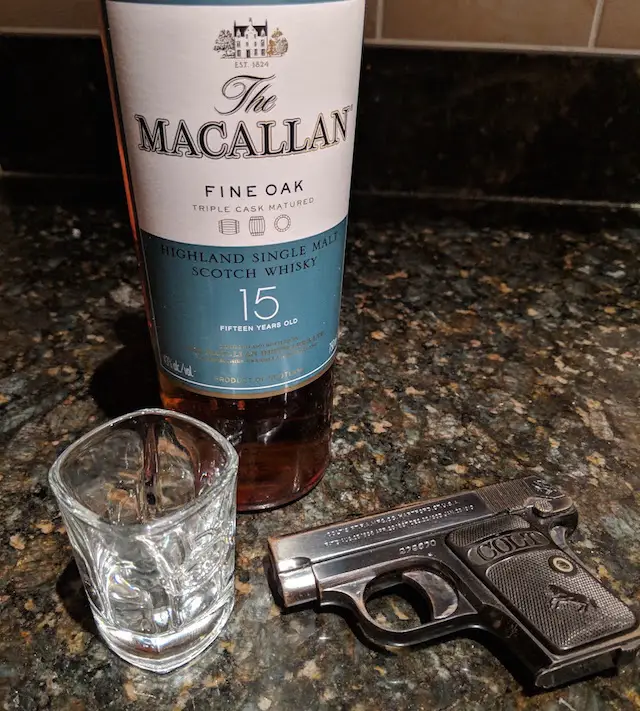
Guns and Drugs Don’t Mix
Never under any circumstances operate a firearm while under the influence of alcohol, illicit, or mind altering drugs. Not only do these impact your judgement and other mental facilities, but they also have an affect on your physical abilities. While some states do not forbid concealed carry in restaurants or other locations that serve alcohol, it’s never a good idea to consume alcohol in any amount while carrying a concealed firearm. Furthermore, it is a criminal offense to be in possession of both illicit drugs and a firearm.
Safely Loading Your Handgun
Once you understand the basic rules for safely handling and usage of a handgun, you’ll need to understand the process for safely loading and unloading your weapon. There are two distinct types of handguns, and I urge you to familiarize yourself with the operating cycle of each before proceeding.
Since there are two different types of handguns, I’m going to cover the method for revolvers and semi-automatic handguns. It is important that during the entirety of loading your weapon that you exercise proper trigger discipline.
Safely Loading A Revolver
- Pick up the revolver with your dominant hand.
- Ensure the weapon is pointed down range, or in a safe direction.
- Tip the muzzle downward and slightly to the right.
- Engage the cylinder latch using the thumb of your dominant hand.
- Apply pressure to the right side of the cylinder (from the operators perspective) to dislodge it, thus rendering the weapon inoperable.*
- Load the cylinder using your non-dominant hand, either with individual cartridges, or with assistance from a speed loader.
- Use your non-dominant hand to apply pressure to the left side of the cylinder (from the operators perspective), returning it to the operable position.*
- At this point the weapon is ready to shoot.
* Most revolvers have cylinders that swing in the direction noted above. However, there are some left handed revolvers that operate in the opposite manner. Simply invert the directions if you are operating a left handed revolver.
Safely Loading A Semi Automatic
- Pick up the handgun with your dominant hand.
- Keep the weapon pointed down range or in a safe direction.
- Open the action with your non-dominant hand by moving the slide rearward and engaging the slide lock using the thumb of your dominant hand.
- Insert the loaded magazine into the magazine well using your non-dominant hand.
- Ensure the magazine is seated properly by tapping the bottom of the magazine with the palm of your non-dominant hand.
- Release the slide lock to return the slide to it’s forward position OR pull back on the slide and release. Pulling back on the slide will disengage the slide lock.
- Engage any external manual safeties.
- At this point, disengage the safeties and the weapon is ready to shoot.
Safely Unloading Your Handgun
Whenever you are handed a weapon, you should assume it is loaded. However, you should also take the time to clear the firearm. Clearing a firearm means taking the steps to unload the weapon and ensure there is not a cartridge in the firearm that could be discharged.
I was taught to never assume that a weapon is clear even if someone performs the process in front of you. Until you have verified the weapon is cleared yourself, and you maintain possession of the weapon, it should be treated as if loaded. Next, I’m going to cover how to properly clear a revolver and a semi-automatic handgun. As always, exercise trigger discipline throughout each process.
Safely Unloading A Revolver
- Keep the muzzle of your firearm pointed downrange, and elevate it upwards.
- Push the cylinder out by pressing the cylinder latch.
- Use the palm of your non-dominant hand compress the ejector rod.
- With the muzzle still pointed in a safe direction, tilt the muzzle downward.
- Visually inspect each chamber on the cylinder to ensure the rounds have been fully ejected.
- Keep the cyliner open and place on table or other flat surface, with the muzzle pointed in a safe direction.
- The firearm is now clear.
Safely Unloading A Semi-Auto
- Keep the firearm pointed down range or in a safe direction.
- Press the magazine release button to dislodge the magazine, and fully remove.
- Pull the slide backwards to eject any round that may remain in the chamber.
- Repeat step 3 to ensure no other rounds have been chambered. Do this until no round is ejected when you rack the slide.
- Lock the slide in the rearward position.
- Visually inspect the chamber to ensure no round is present.
- Place the firearm on a table or flat surface with the slide locked in the rearward position.
- The firearm is now clear.
Parting Shots
Before you carry a concealed weapon, you should be confident in your abilities to handle a firearm. However, the most important firearm to be familiar with is your own. Handling your own firearm in a safe manner should be second nature. Following these rules provides basic firearm safety to protect you, and those around you from harm. Like any skill, these basic safety rules are honed through constant practice. Familiarize yourself with the processes described above to ensure proper handling and usage of your firearm.
Once you are confident, and have obtained the proper credentials to carry a concealed weapon, check out the recommended holsters and apparel. Check back often to see any new write ups that may help you to be a more responsible gun owner.
